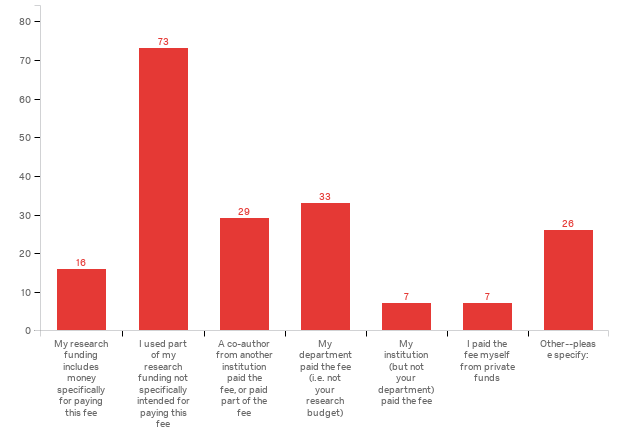Your paper’s been accepted for Nature Communications
Fin’ly your research career can hit the stratosphere
But hold your celebrations —
“APC six thousand bucks?!? That simply isn’t fair!”But wait a mo’ — stay your dejection
We’ve found some dosh to spare
In the finance equivalent of
Down the back of the chair!
New Zealand researchers no doubt often look with envy at colleagues overseas, who are far more likely to have their publishing cost covered by their institution or their funder, since we don’t have mandates or policies set by our major funders or at a national level (yet), despite the government having a policy that covers its own work (the NZ Government Open Access Licensing (NZGOAL) Framework). So, a while back we asked researchers who had paid to have their work published in an open access publication how they had done so.(1)
As mentioned in the first post for OA week, making your work freely available doesn’t have to cost you money, given that there are free OA journals and that in other cases pre-publication versions can be easily shared in certain ways. However, if your publication venue of choice is OA-only and charges a fee you’re left with no choice but to look elsewhere or in many cases, as is clear from the chart above, find the money ‘down the back of the [research budget] chair.’ Only 16 of 191 respondents to this question (13%) had funding that specifically covered the cost of paid-OA. It should be of concern to researchers, the University, funders, the government and, indeed, publishers that the economics of OA can affect people’s decision-making and even prevent them from publishing in the best journal for their research.
As things stand in New Zealand, the key point for researchers is that if it’s likely that a paid-OA publication will be the best place for your research then this potential cost should be part of your planning. Don’t submit and then, after acceptance, work out how you’ll pay. There are things you can do: investigate a publisher’s waiver policy or ask them for consideration of other work you do for them.(2) Are any of your co-authors in a position to help? (Note too that to qualify for a waiver journals will likely require that you apply for this at the time of submission.) If all else fails and you really want your work freely available then finding an equivalent closed journal and making a pre-publication version of your work freely available may be the best option.
The very bad poem at the top of this post was inspired by Margaret Mahy’s classic ‘Down the back of the chair’ — available here to read but better in book form with Polly Dunbar’s wonderful illustrations.
Reference
(1) White, R., & Remy, M. (2016). University of Otago Open Access Publishing Survey Results: p. 18. Retrieved from http://hdl.handle.net/10523/6947
(2) Our research also found that 36% of our authors had their fee waived for one reason or another (White, R., & Remy, M. (2016) p. 17).


